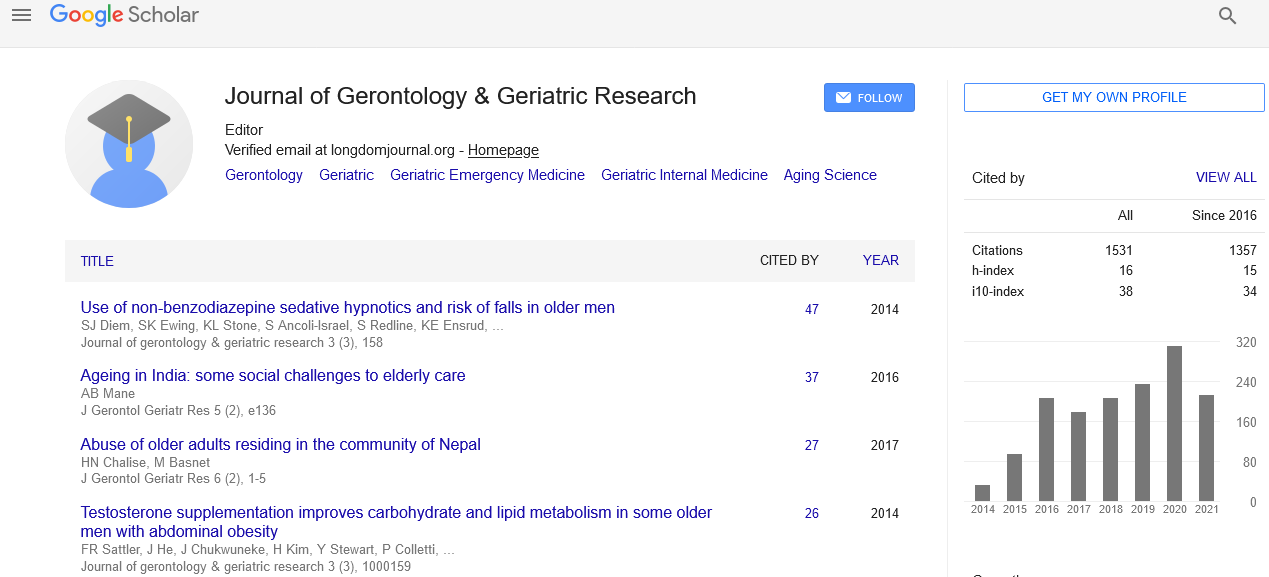PMC/PubMed Indexed Articles
Indexed In
- Open J Gate
- Genamics JournalSeek
- SafetyLit
- RefSeek
- Hamdard University
- EBSCO A-Z
- OCLC- WorldCat
- Publons
- Geneva Foundation for Medical Education and Research
- Euro Pub
- Google Scholar
Useful Links
Share This Page
Journal Flyer

Open Access Journals
- Agri and Aquaculture
- Biochemistry
- Bioinformatics & Systems Biology
- Business & Management
- Chemistry
- Clinical Sciences
- Engineering
- Food & Nutrition
- General Science
- Genetics & Molecular Biology
- Immunology & Microbiology
- Medical Sciences
- Neuroscience & Psychology
- Nursing & Health Care
- Pharmaceutical Sciences
Appropriately diagnosing and managing head and facial pain disorders in the geriatric population
International Conference on Geriatrics & Gerontology
July 08-10, 2014 DoubleTree by Hilton Hotel Chicago-North Shore Conference Center, USA
Larry Charleston IV
Accepted Abstracts: J Gerontol Geriat Res
Abstract:
Certain headaches occurring at any stage of life can have significant impact on the quality of life. Headaches can continue or occur de novo in later life. The International Classification of Headache Disorders 3-beta(ICHD-3beta), published in 2013, classifies over 300 different headaches. While new onset headaches initiating after age 50 is a red flag and warrants proper evaluation, there are some headache diagnoses that are more prevalent with the advancement of age. Herein, the author will discuss the red flags of headache in geriatric populations as well as provide an update to specific headache/facial pain diagnoses more commonly seen in this population including, hypnic headache, burning mouth syndrome, giant cell arteritis, cardiac cephalagia. Migraine, tension type headache presentation, (and/or medication overuse headache) consideration in the geriatric population will also be briefly addressed.
Biography :
Larry Charleston IV is a Clinical Assistant Professor in the Department of Neurology at the University of Michigan. He is board certified by the United Council of Neurological Subspecialties in Headache Medicine and by the American Board of Psychiatry and Neurology in Adult Neurology. He is a graduate of Wayne State University School of Medicine and completed his Neurology residency in 2009 at Baylor College of Medicine, and a Headache and Facial Pain fellowship at Jefferson Headache Center in Philadelphia. He was the Director of the Comprehensive Headache Care Center, Director of the Headache Infusion Center and was an Assistant Clinical Professor at Michigan State University College of Human Medicine. His interests include the use of nutraceuticals in headache prevention, peripheral nerve blocks and other interventional procedures for headache management, health care policy and advocacy, headache and facial pain education, and eradication of headache care/neurological disparities in ethnic minorities and he is published in several of these interests.


